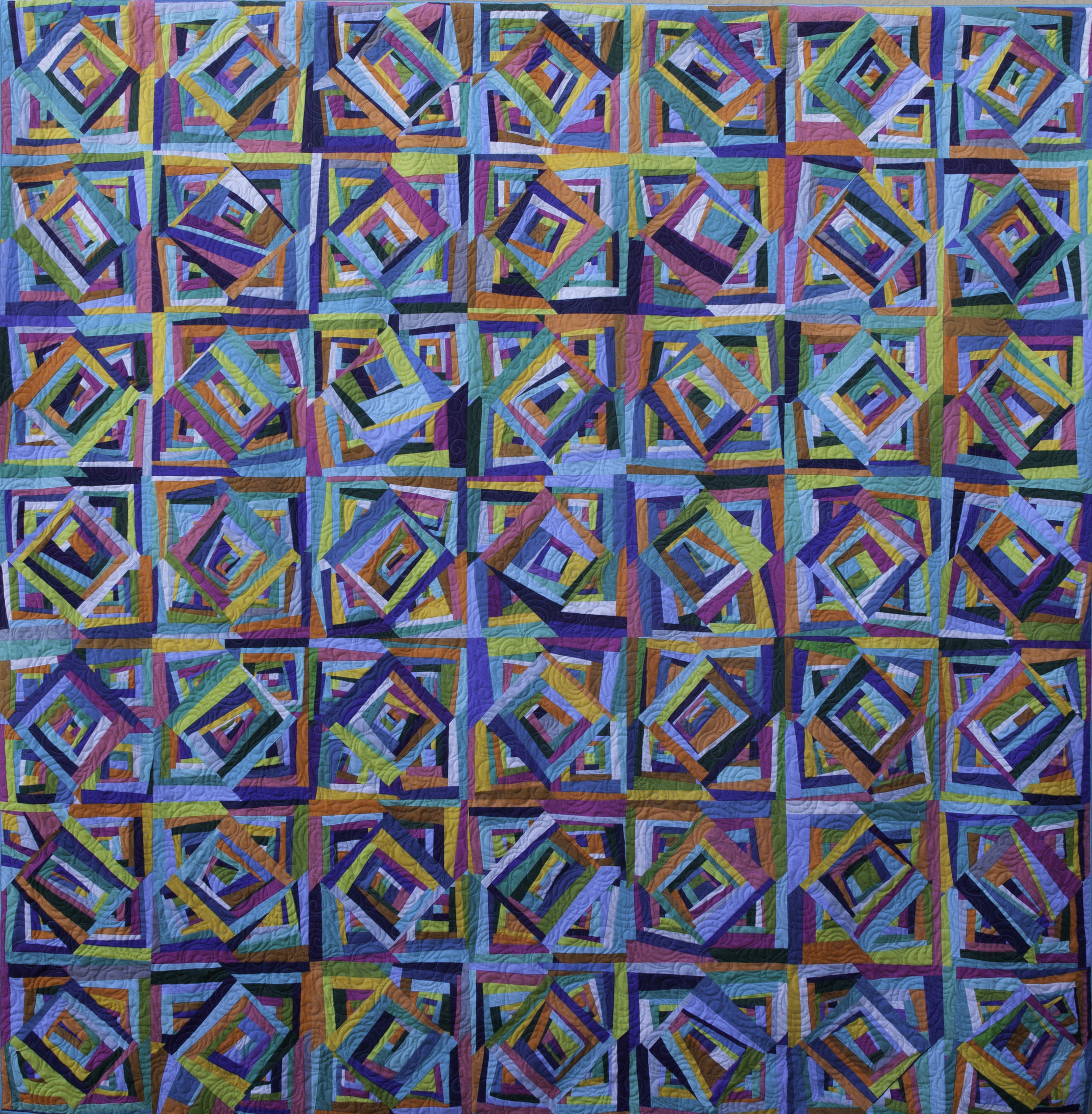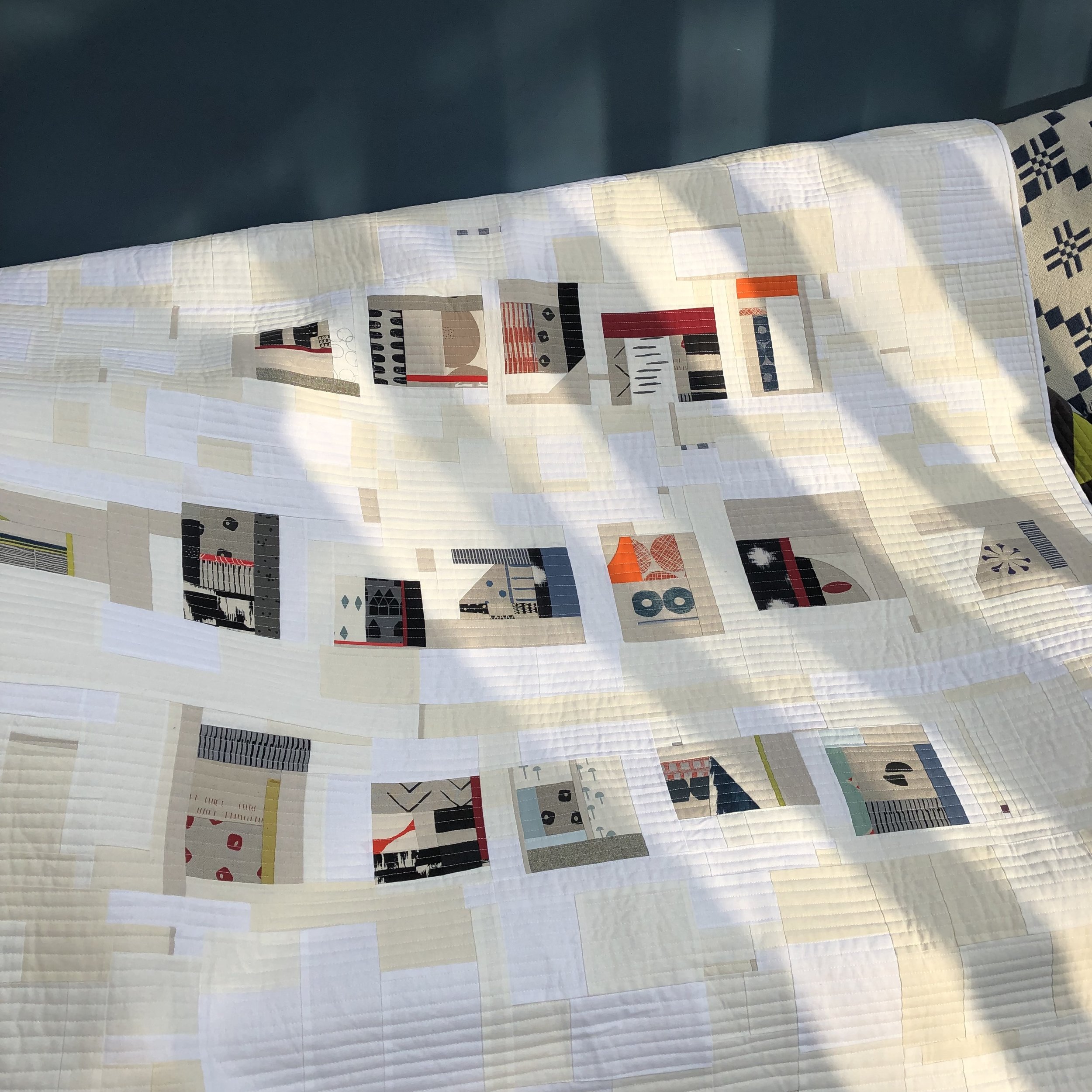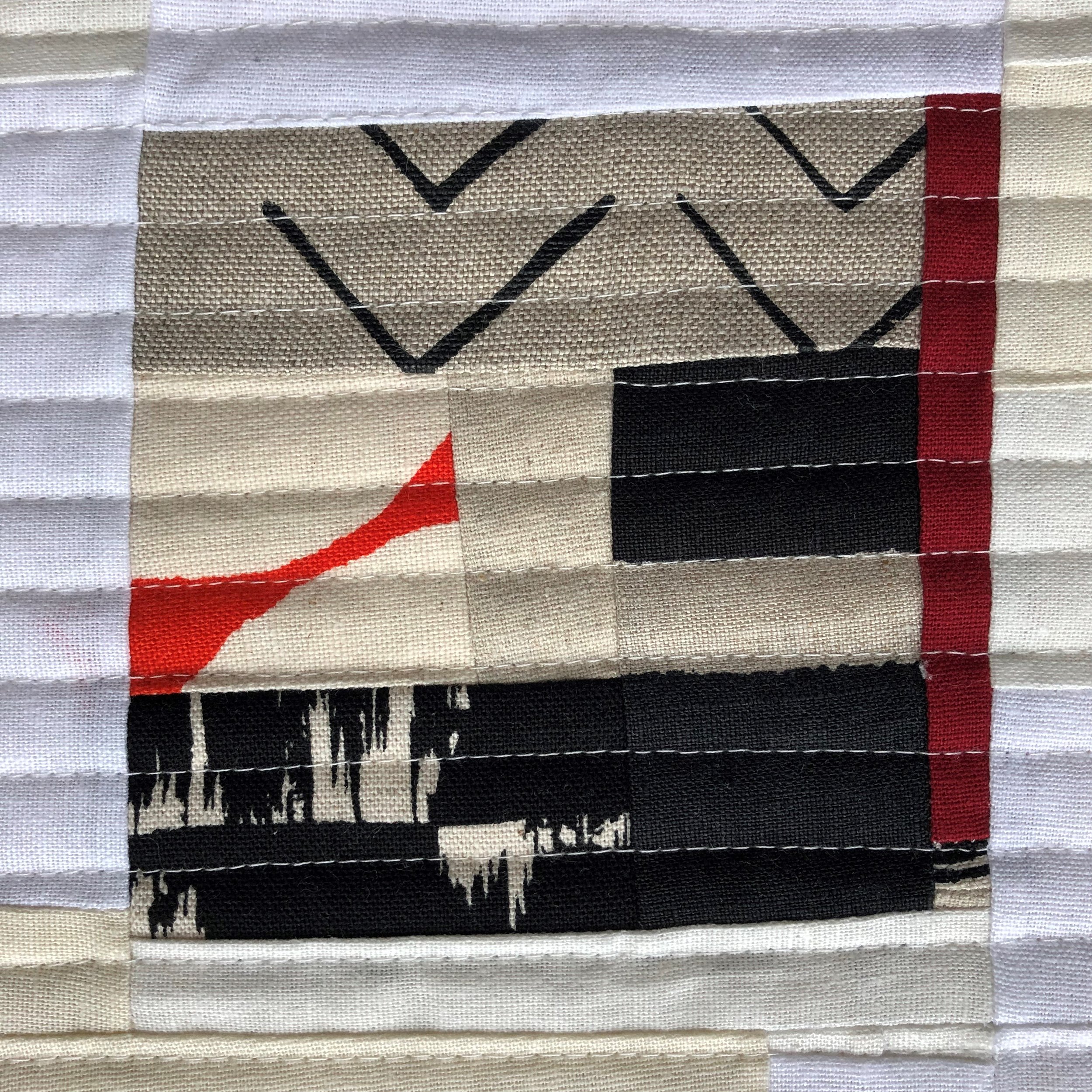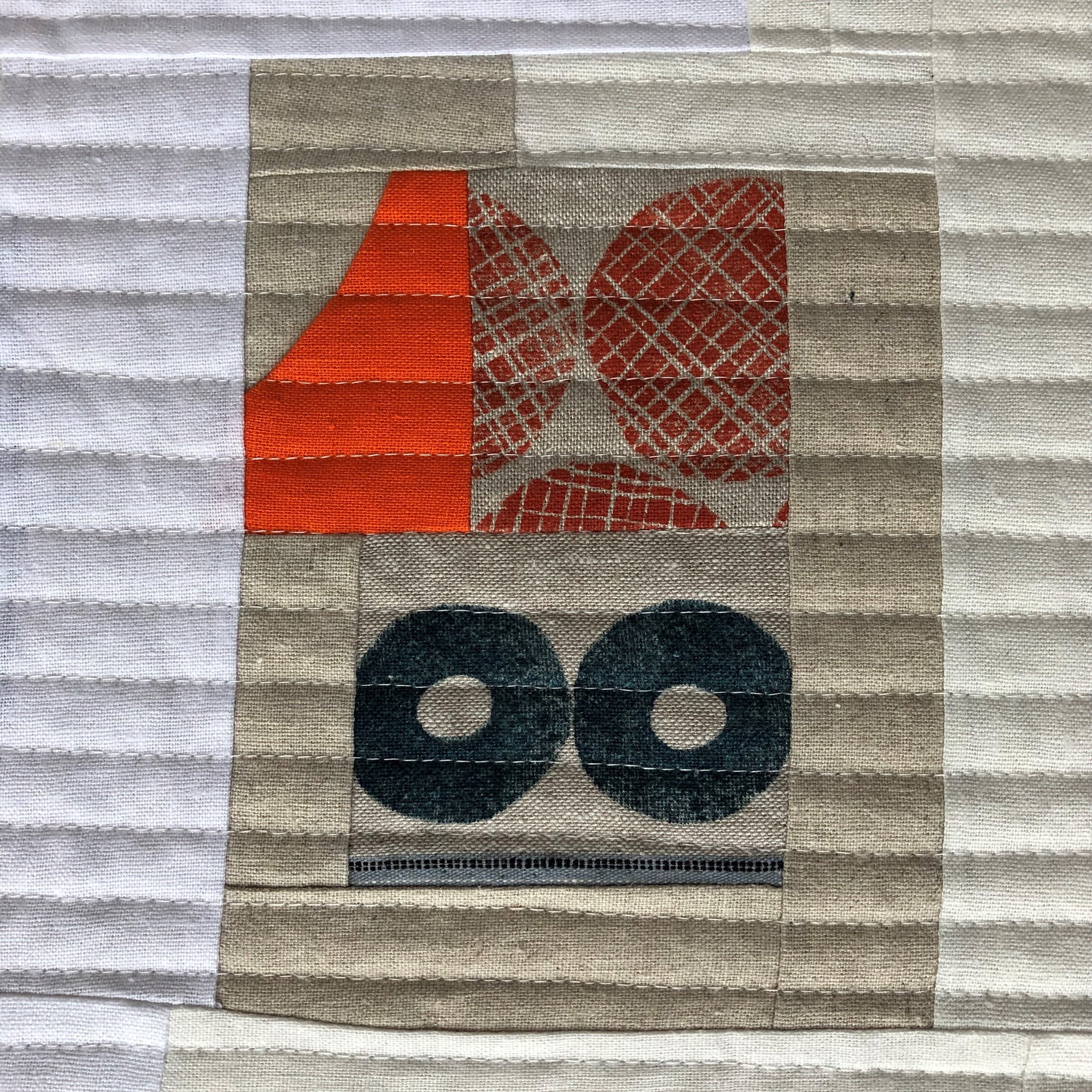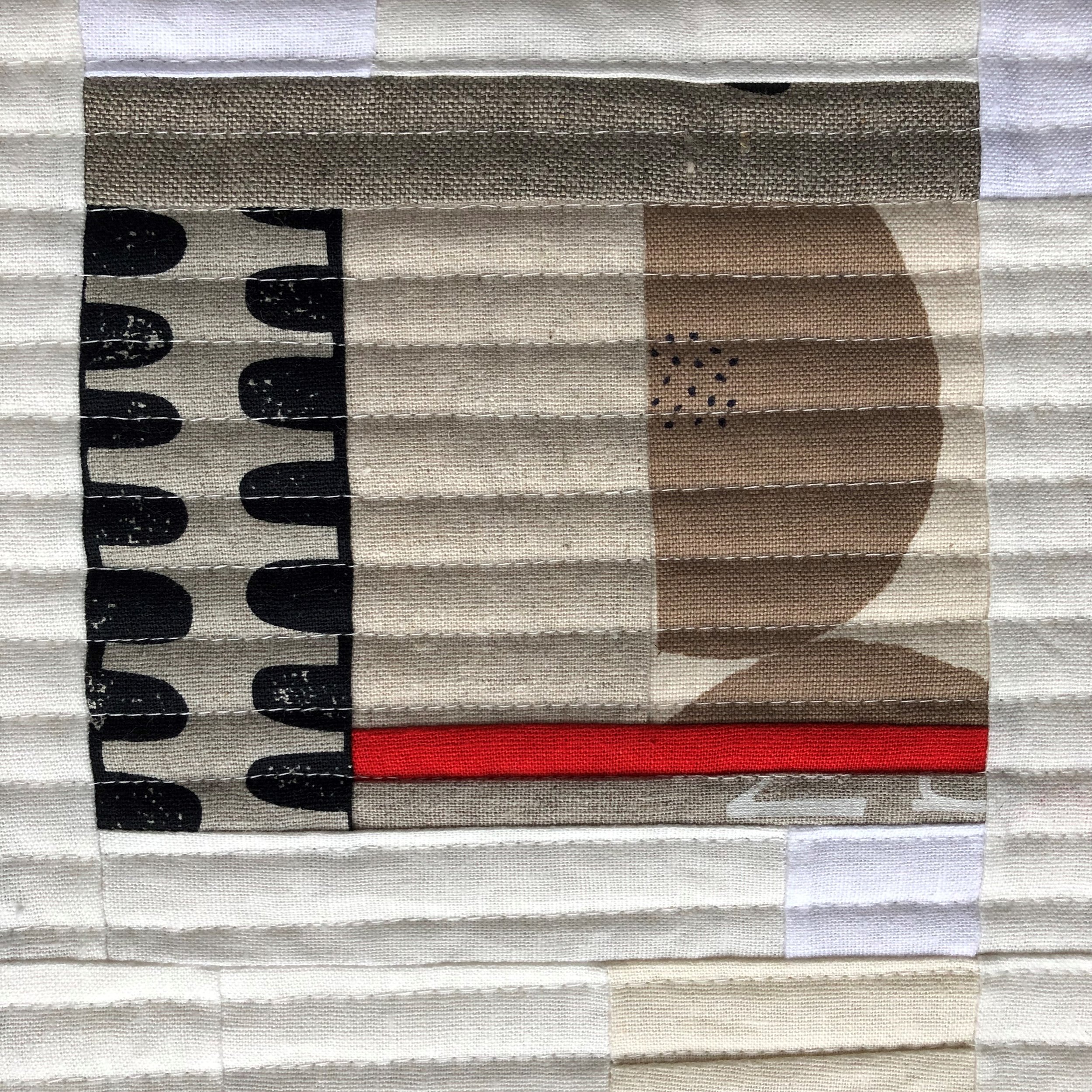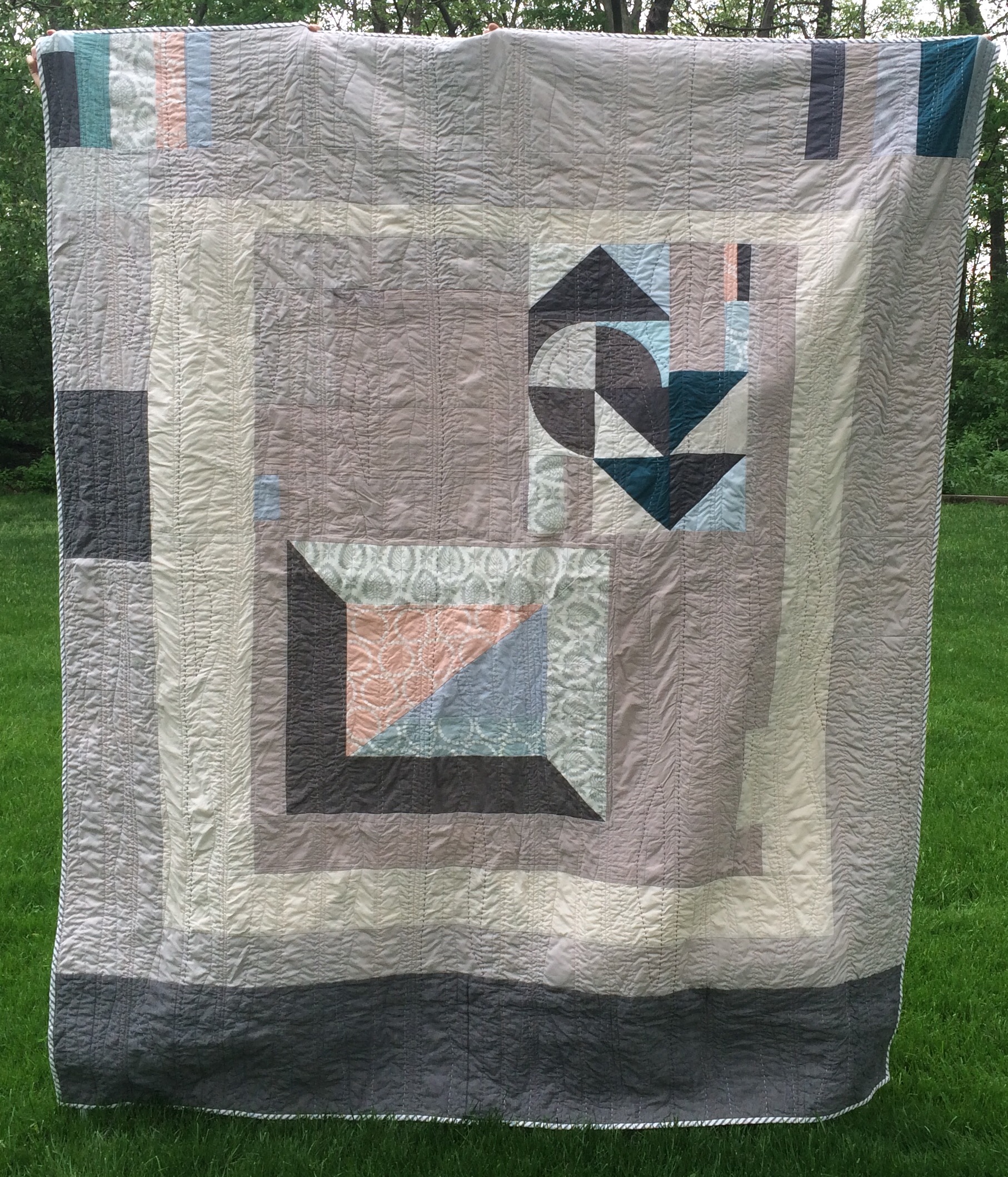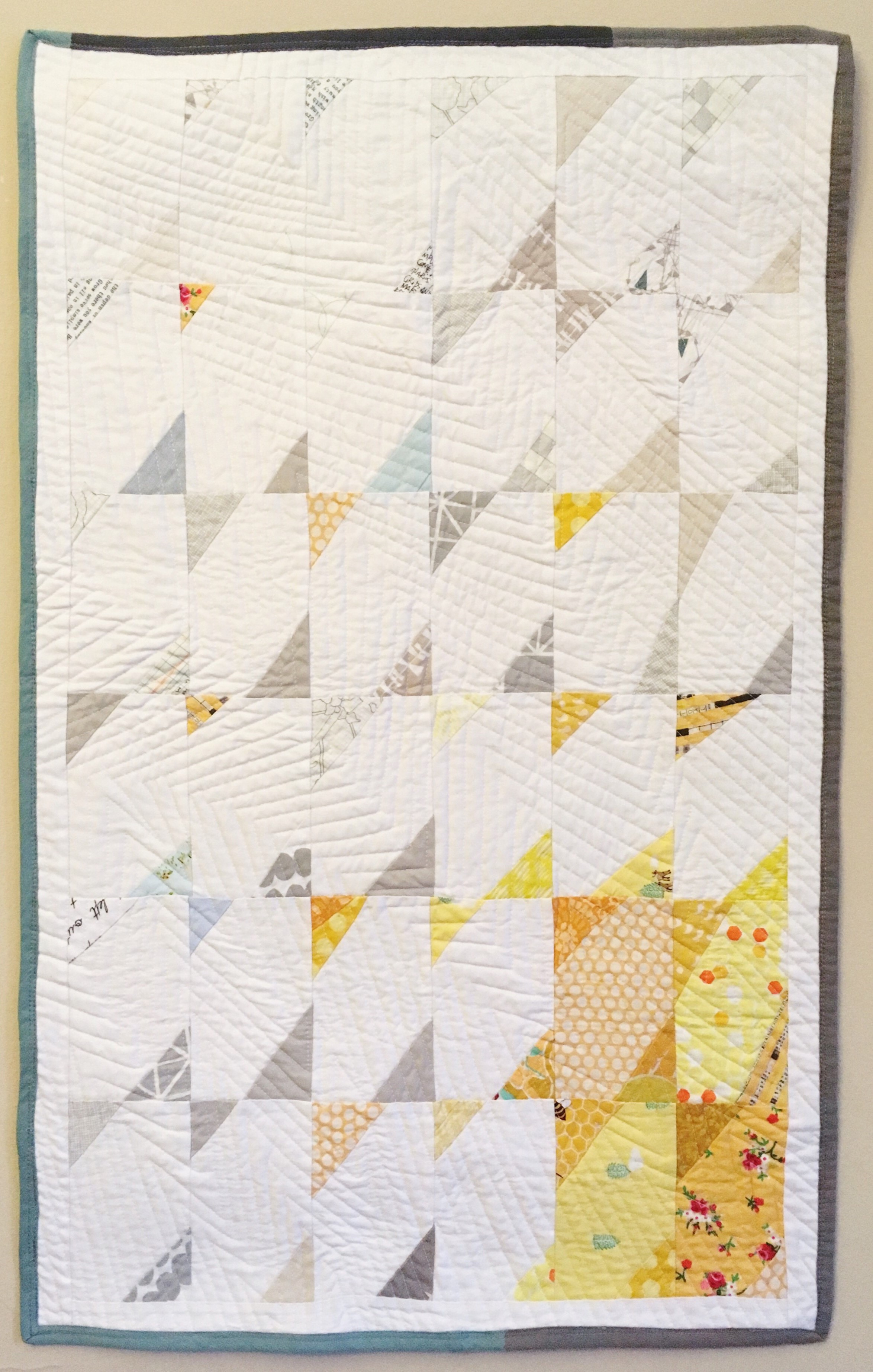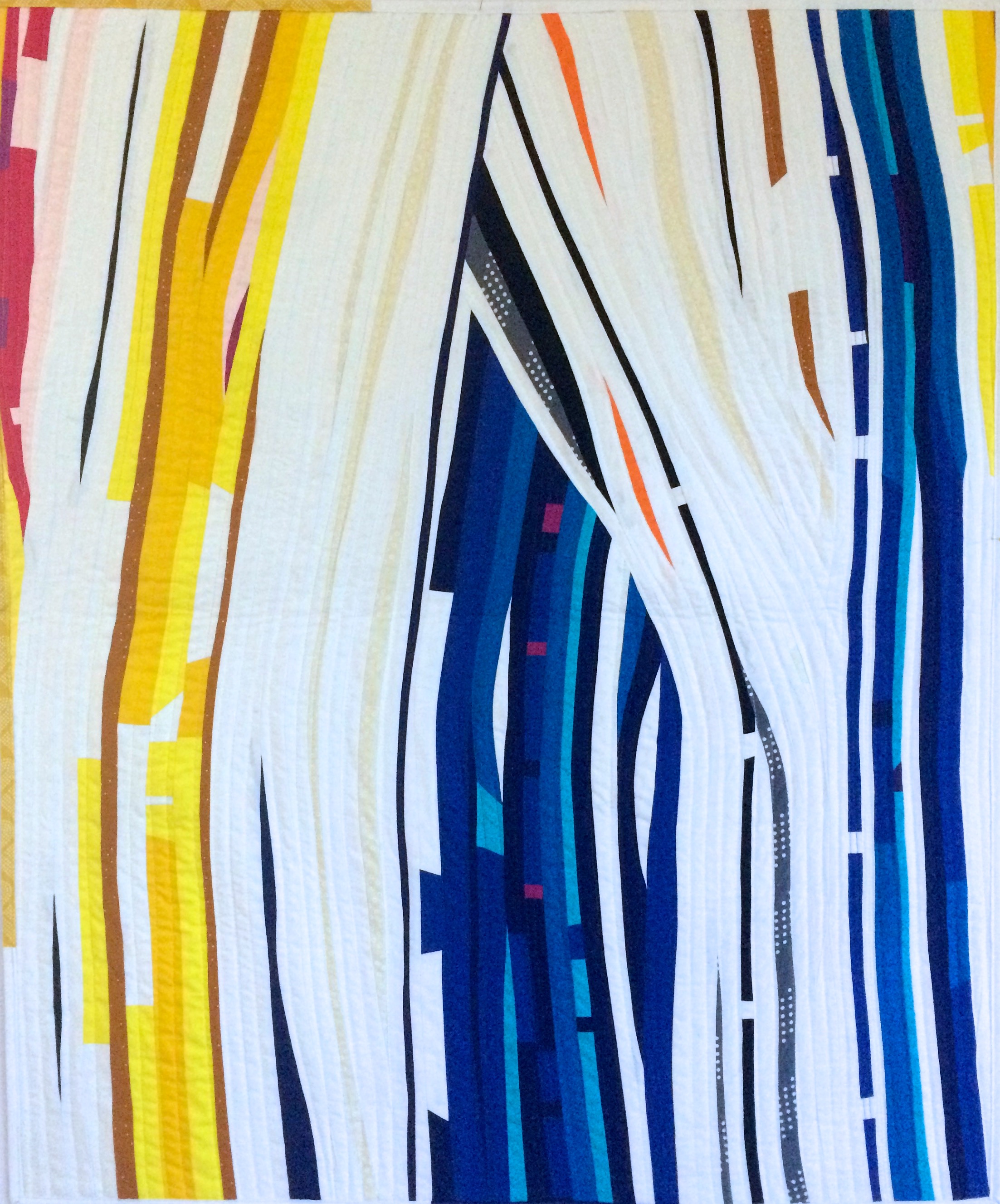Alison Schwabe
The ART of IMPROV
Alison Schwabe is an Austrailian born artist who grew up learning to sew and embellish cloth. Stitchery became a passion. As she has moved around the world the landscapes of her life have inspired her art, from Sunburnt Textures in Austraila, to the Ancient Expressions of the American Southwest. Her recent series Ebb and Flow is inspired by the give and take that our lives encounter as time passes and changes occur over periods of time. Alison publishes and shares about her work, on her blog alisonschwabe.com/weblog/ Her work is exhibited regularly in the USA and Australia, she teaches workshops, and welcome opportunities to speak to textile art groups. She has recently been invited to teach improvisational piecing in September at a big annual patchwork and quilting festival in Gramado, Brasil. Now that sounds FUN!!! We thank Alison for sharing with us on The Art of Improv.
Circulation - layout diagram and finished quilt Alison Schwabe
What does working improvisationally mean to you? How would you define the ‘Art of Improv’?
If you take dictionary definition literally, improvisational means that you proceed without any preconceived idea of where it's going to take you. While the element of serendipity can certainly be part of working this way, I think skilled improvisational textile art is not this chaotic, either. To me 'improvisational' quilt making has become synonymous with the organic-looking lines that result (and can be emphasized) when one is working totally free hand, i.e. without precisely measured cut shapes and straight lines. Single designs or repeated motifs equally lend themselves to improvisational construction.
Have you always worked improvisationally?
I learned to draft and construct traditional geometric patchwork in the late 80s, and loved it. However, since first learning the basics for improv construction in a Nancy Crow class in 1992, it became clear that in addition to enabling us to work faster to get through the large amount of class work, it was such a satisfying, liberating, way to piece fabric. Free hand cutting and piecing is my automatic go-to technique. I can do plenty of other textile art techniques, but just love improvisational patchwork.
Do you work improvisationally, consciously, intentionally? If so, how do you begin? If not, how do you find yourself getting there?
Yes, I do work improvisationally by intent. My art is based on patterns of lines and shapes I see everywhere in nature especially- and to me any line is a potential seam. Very influenced by repeat block layouts of traditional p&q, I tend to sketch out simple diagrammatic assemblies of lines and go from there, building units one by one, and I sometimes alternate them with plain units in which quilting lines echo the more obvious pattern unit. I rarely sketch out an entire design in advance, rather they grow to the dimensions I have in mind, which is a consequence of how I work.
Auditioning fabrics is an important part of my process, and always includes scrap bag diving (I keep a large heavy duty see-through plastic bag of scraps and off cuts too small to put back into my stash) Once I have assembled what I'm going to work with, I simply begin cutting and sewing.
Ebb and Flow Alison Schwabe
How often do you work with improvisation?
I always piece like this. One feature of many of my designs is that I love grids of repeat units, and usually measure and cut these units precisely with straight edges and 90 degree angles or equilateral triangles. There have been a few times when I've cut the units themselves free hand, but mostly I love the straight edge juxtaposed with the organic.
Please share a bit about your process. Do you have methods to getting started? Do you have tricks to getting unstuck? Do you have motivators to finishing up?
I don't have any tips about getting unstuck - except that I only ever start something I really want to do. Occasionally I feel a bit of indecision or irritation so leave it pinned on my board a while to focus on something else, but never have more than a couple of things going at the one time as it becomes too confusing and then I don't progress with anything. I finish each piece as I go while thinking ahead to the next. I like that moment when the sleeve and signature are done and the work is 100% completed bar the catalog entry and statement. I listen a lot to recorded books when working on a piece, which helps me through the tedious stretches - so while I'm absorbed in that I'm moving right along at a good pace. I walk further when listening, too!
What advice would you give to someone interested in trying to work improvisationally. Can you share some good advice that you received that helped you become more comfortable this way?
I have a free 2-page .pdf of basic instructions on my website's blog that many have found helpful.
Tide and Time Alison Scwabe
How would you finish the sentence, ‘What if, . . .?’
The only answer I have to the question "What if...?" is: "Just try it and see what happens." I am a strong advocate of sample making when trying anything new to me, or testing an idea.
What are you reading, listening to, watching, or any other inspirational obsessions you would like to share?
Inspiration is everywhere if you take time to look and listen, and as many of us have smart phones these days, or small point and shoot cameras, there's no excuse to not whip out a camera to take a snap of something interesting and record it's essence. I once made a quilt from a long list I wrote of colours that I observed in a landscape we were driving through, because I did not have a camera in the car. A pencil and tiny sketch book or some scraps of paper or back of an envelope do just as well as long as they are actually in a pocket or bag at all times. I visit museums and art exhibitions featuring various media, not just textiles. I read a lot, fiction and non-fiction. I'm currently reading John Sopel's "If Only They Didn't Speak English" (kindle) "Warlight" by Michael Onaatje (book) Coming up next on my kindle will be "Fear" by Bob Woodward. I frequently dip into Pat Conroy's reading of his own book "My Reading Life" He's one favourite author, and I love hearing about books and people that have impacted his life. I write myself, and find writing about things often helps crystallise ideas. My textile art related blog-cum-visual diary is on my website alisonschwabe.com and I write another blog pickledgizzards.com
I love news and current affairs on tv, and watch only a few other programs, often crime and forensic thriller kinds of things. I play mahjong and enjoy a good night of cards.
Alison, thank you for sharing your insight on improvisation with us. I too am trying to finish the sleeve and labeling of my works as I go and I like the idea of taking this time to get inspired by a new work. I find it is a good way to honor the piece, giving the completion of it a little time to sit with. Your ‘what if’ advice resides with me as well and I have had many good things come from this inhibited way of just making to explore the possibilities, it makes me want to head directly to the studio now! Thank you for sharing your work and for the generosity of sharing techniques and methods via your blog, it is just what we all need when we are not sure where to go next.
To learn more about Alison, check our her website, blog, and instagram account!
If you would like to be featured on The Art of Improv please contact me! I would love to hear how improvisation impacts your art making process.







